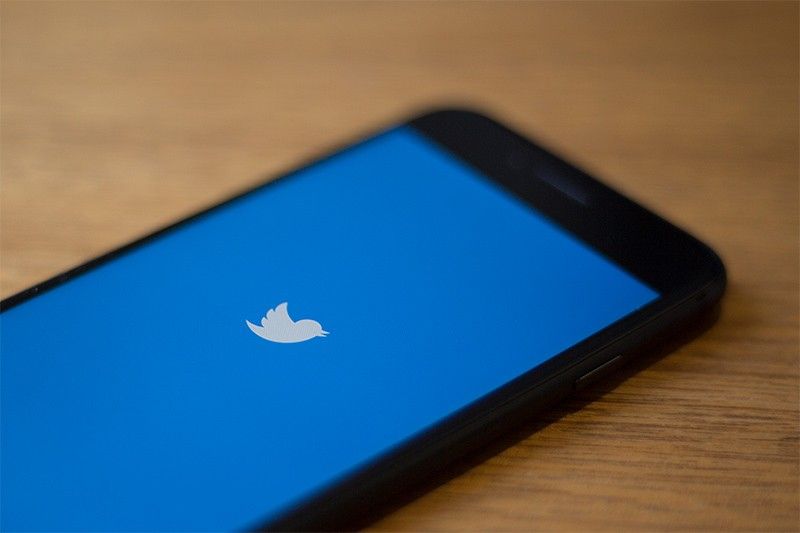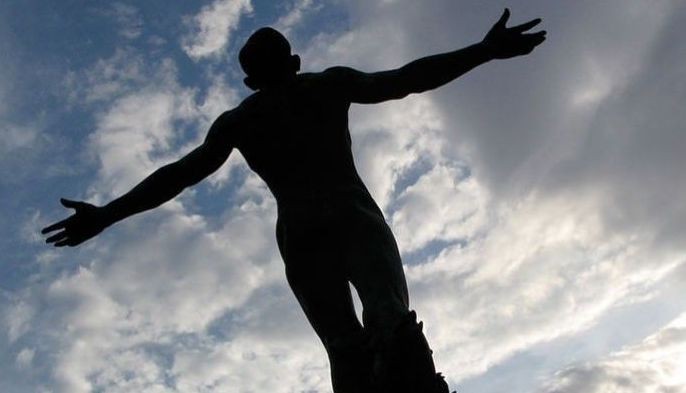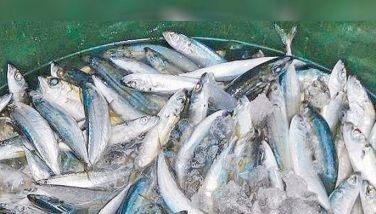Explaining UP frat leaks and mal-information on social media

MANILA, Philippines — Photos of an alleged Facebook group chat of members of the UP Diliman College of Engineering-based Tau Alpha fraternity were posted on Sunday by an anonymous Twitter leak account, claiming the men distributed “photos that shouldn't be shared with other people.”
Attached in the post, now taken down along with the Twitter account, was a screengrab of a Google Drive page where blurred folders are claimed to be “named after women.”
Although the university administration has not released an official statement as of writing, the apparent revelation marks the third in a series of recent controversial “leaks” implicating UP fraternities in illegal and unethical conduct.
Series of leaks
Public backlash erupted in November 2018 after screenshots of a supposed group conversation between unidentified Upsilon Sigma Phi fraternity members were uploaded by an anonymous Twitter account. Another version where members of the alleged chat are identifiable was later posted.
The widely-publicized controversy surrounding the “#LonsiLeaks” prompted statements and investigation from both the linked fraternity and the university administration, most notably UP President and Upsilonian Danilo Conception.
“[M]y pain cannot be compared to that of those maligned by the posts, and I assure the University community that I will do all I can, both as President and as a fellow of the fraternity, to root out this problem and to instill or reaffirm a culture of respect, tolerance, and decency within Upsilon and our entire fraternity system,” Concepcion said in a statement dated Nov. 23, 2018.
More recently, screenshots of an alleged Facebook group chat of the UP Sigma Rho fraternity were leaked in September, implicating several members in acts of hazing.
The event incited anger on social media, compounded by a perceived lack of action on the earlier leak involving the Upsilon fraternity. The identified Sigma Rho members who were student council representatives, in particular, faced criticism online.
However, the subsequent death of a member of the tagged fraternity elicited appeals from the university administration and even Malacañang for students and other stakeholders to refrain from cyberbullying and online harassment.
"At this time of collective grief, let us not engage in public online bashing or even sending private hate messages to those perceived to be responsible. Doing so fails to raise the level of discourse and allows our emotions to cloud our better judgment," an October statement by the UP College of Mass Communication read.
Undermining due process
The veracity of the Sunday leak tagging Tau Alpha fraternity has not been confirmed but sparked online outrage similar to the preceding incidents. The post containing the screenshots reached at least 180 retweets before being taken down.
Moreover, at least eight names of supposed fraternity members were identifiable in the screenshot of the alleged group chat, which contained undated messages.
The circumstances of the post, in effect, made the identified individuals prone to what UP Diliman Chancellor Michael Tan called “social media lynch mobs.”
In an October column, Tan addressed the consequences of online bashing following the events of the Sigma Rho leak and the death of a student.
"Students attack other students for alleged crimes with social media posts filled with ridicule, hate and vitriol, which then go viral. The lynching is formidable in the way it can easily involve hundreds, even thousands, of people," the chancellor said.
“In other cases, there may be an actual transgression, which is inflated to stoke people’s anger. The point is that punishment is meted out without due process.”
Tan said the evidence against the perpetrators of hazing was clear and that due process was undermined by the wave of online lynching.
He also said the UP administration "had acted on all eight cases of fraternity violence from 2014 to the present" despite claims that nothing was being done by authorities.
The danger of mal-information
Mal-information, according to a 2017 report published by the Council of Europe, “is when genuine information is shared to cause harm, often by moving information designed to stay private into the public sphere.”
Forms of mal-information include leaks, harassment and hate speech, according to the report entitled “Information Disorder: Toward an Interdisciplinary Framework for Research and Policy Making.”
Mal-information is categorized as one of the three types of information disorder along with misinformation and disinformation.
Misinformation is the unintentional sharing of false information, while disinformation is knowingly sharing false information to cause harm. Mal-information differs from these by using information “based on reality” to inflict harm on a person, organization or country.
UP journalism professor Danilo Arao in an October blog post said that the timing of the Sigma Rho leak should be put into consideration.
“Nangyari ang GC (group chat) hindi kamakailan lang kundi ilang taon na ang nakalipas...Kung sinuman ang nagpakalat ng GC sa social media, malamang na matagal na niya itong hawak at, kumbaga sa laro ng baraha, ito ang isa sa mga alas na bibitawan niya sa ‘tamang pagkakataon,’” Arao said.
(The group chat took place not recently, but several years prior….Whoever leaked it on social media obviously had the evidence for a long time and, in a game of cards, this is the equivalent of dropping an ace ‘when the timing is right.’)
Data & Society’s 2017 report “Media Manipulation and Disinformation Online” also said that mainstream social media sites like Facebook, Twitter, and Youtube are used “to spread extreme messaging to large numbers of people and to seed topics for journalists.”
Twitter’s trending topics, in particular, are taken advantage of “to amplify certain stories or messages.”
It also discussed the possible motivations of users for spreading harmful content.
“[T]he actors creating and spreading disinformation, propaganda, and/or fake news are usually motivated by a combination of one or more of these categories—ideology, money, and/or status and attention,” the report read.
“On social media, users often share content they believe will both appeal to their audience and be consistent with their desired self-presentation. Other participants are motivated by the “lulz”—the enjoyment they get at the expense of others.”
How can we ‘minimize harm’?
The "Information Disorder" report states a “public interest justification” for certain leaks but does not define or set the criteria for exceptions.
However, existing codes of ethics for both journalists and bloggers provide guidelines on minimizing harm and even reporting on leaked information.
A 2017 Nieman Reports article said that it’s important to question a leaker’s motivation for leaking.
A 2018 ProPublica article also said that unidentified sources need to “merit anonymity” and must be carefully vetted before using the information they provide.
“More often than not, the journalist and anonymous source know each other...These relationships are built on trust, the kind that develops over time as information is provided or, in some cases, exchanged,” the article read.
The Ethical Journalism Network advises seeking corroboration or double-checking of leaked information.
“Check the information, consider alternative explanations, consider the political and factional context of the leaks taking place, [and] allow the people implicated a full and proper chance to respond,” the group said in a 2017 website post.
If leak accounts refuse to divulge their identity to media or proper authorities, the information they provide is not independently verifiable since the factual context cannot be proven.
The Society of Professional Journalists Code of Ethics also said that sources, subjects, colleagues and members of the public need to be treated with respect and privacy.
“Balance the public’s need for information against potential harm or discomfort. Pursuit of the news is not a license for arrogance or undue intrusiveness,” the code reads.
“Show compassion for those who may be affected by news coverage. Use heightened sensitivity when dealing with juveniles, victims of sex crimes, and sources or subjects who are inexperienced or unable to give consent.”
Aside from displaying the names of frat members, the leaks also included the identities and, in some cases, pictures of people mentioned in the group conversations.
Poynter in 2004 published an article on what bloggers can learn from journalists, pointing out the main difference between the two is the presence of an editor.
“With so many new people involved in blogging, most of them having no training in journalism practices, ethics, and media law, personal legal liability is a big deal,” the article read.
According to Poynter, the lack of gatekeeping poses many risks, but bloggers can take the proper measures like studying codes of ethics to avoid legal and other repercussions.
- Latest
- Trending





























